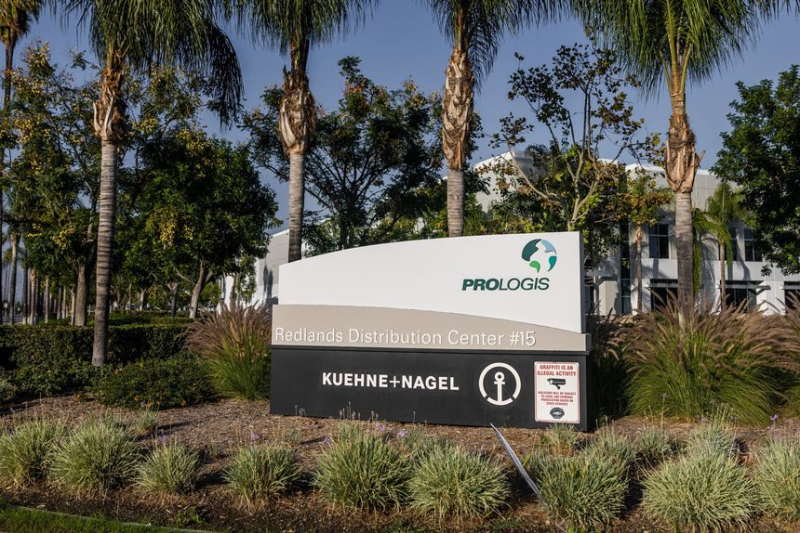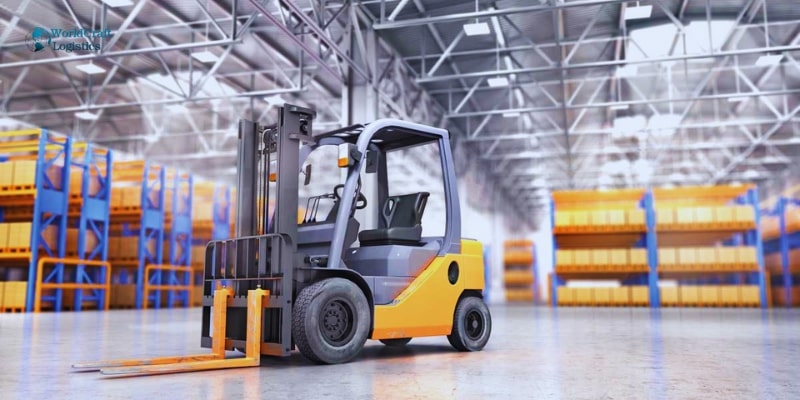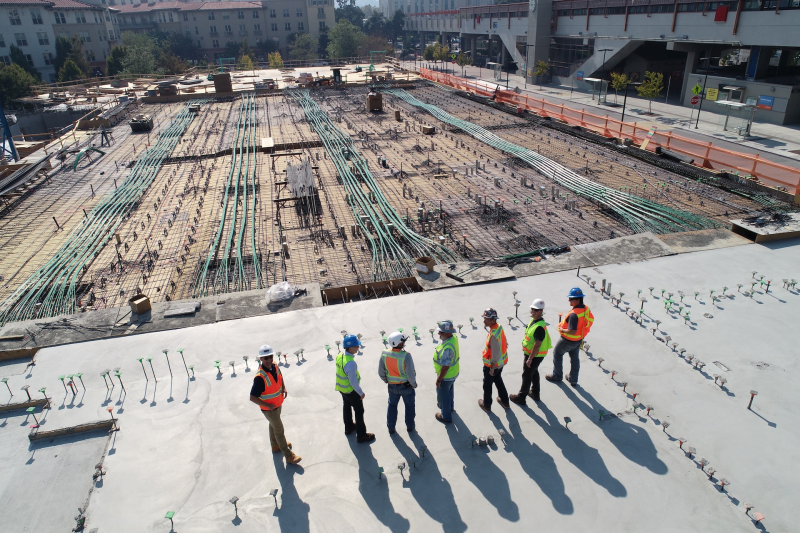In the realm of supply chain optimization, warehouse consolidation emerges as a strategic practice aimed at enhancing efficiency for enterprises grappling with substantial order volumes or maintaining diverse logistics and distribution centers.
At its core, a consolidation warehouse is tasked with the amalgamation of shipments. Essentially, these logistical hubs amalgamate numerous individual orders into a unified dispatch, thereby curtailing the frequency of shipments and mitigating excessive transportation costs.
What is a consolidation warehouse?
In the logistics realm, a consolidation warehouse serves as a third-party storage facility adept at amalgamating numerous small shipments, strategically sorting them based on their ultimate destinations. This intricate process facilitates the dispatch of each compiled group as a singular, more substantial shipment.

To illustrate, envisage a scenario where a retailer garners 600 product orders—300 bound for Location A, 200 for Location B, and 100 for Location C. Instead of dispatching a multitude of 600 individual shipments, the retailer can leverage the capabilities of a consolidation warehouse. Following the picking and packing procedures, typically executed within the confines of the consolidation warehouse, the retailer's orders, intermingled with those of other businesses destined for Locations A, B, and C, are meticulously grouped by their respective destinations.
Subsequently, these consolidated groups are dispatched in the form of one comprehensive truckload shipment each. In essence, this streamlined approach enables retailers to fulfill the same volume of orders with a significantly reduced number of shipments.
Don't miss the opportunity to optimize your warehouse processes! Click on the articles below, Worldcraft Logistics helps you expand many useful knowledge:
👉 What is dead stock? How to calculate and avoid it from arising
👉 What is a distribution warehouse? Role in warehouse management
👉 What is Warehouse Management System? How WMS Works?
Who uses a consolidation warehouse?

Consolidation warehousing proves to be an ideal match for specific business profiles, particularly those that:
- Maintain multiple suppliers in a localized area or boast high concentrations of customers in close proximity, such as customer hubs in major urban centers or states.
- Seek to diminish their carbon footprint.
- Deal in products that incur high shipping costs through regular postage, especially those with substantial weight.
- Experience elevated order volumes.
A prominent illustration is the retail behemoth Walmart, which inaugurated a 400,000 sq. ft. consolidation center in August 2022, marking the second of its kind within Walmart's supply chain.
Nonetheless, this strategy does not universally apply to all retailers or e-commerce merchants. Reconsideration of consolidation warehousing may be warranted if:
- Customer bases are extensively dispersed geographically.
- It is more economically viable to dispatch shipments individually.
- Order volumes are on the lower side.
- There is a pressing need to expedite orders to customers promptly, and any delays in fulfillment or shipping are financially untenable.
When Should You Use a Consolidation Warehouse?
1. Geographical Proximity Boosts Supplier Efficiencies

Exploiting shared geographical locations among multiple suppliers can optimize cost and operational efficiency by employing consolidation warehouses. This strategic warehousing approach consolidates shipments from various suppliers, amalgamating them into more sizable and economical loads for direct transport to the destination.
2. Optimizing Less-than-Truckload (LTL) Deliveries
Capitalizing on consolidation warehousing facilitates the economical and secure shipment of LTL loads to customers. This method involves amalgamating small shipments into larger loads, ensuring a direct and minimally handled delivery to the destination.
3. Adapt to Shifting Customer Demands
Given the dynamic nature of customer demands for certain products, prolonged storage can devalue items and escalate inventory carrying costs. Leveraging consolidation warehousing allows for sourcing, consolidating, and shipping products based on demand, effectively reducing inventory levels.
Advantages of Utilizing a Consolidation Warehouse

1. Shipping Costs Slashed Through Consolidation Warehousing
In a strategic move, businesses can achieve substantial reductions in shipping costs by leveraging consolidation warehouses. This approach amalgamates small shipments into full truckloads, directly transporting them to their destination. The consequential benefit is a shared transportation cost arrangement with other companies shipping to comparable locations.
2. Increased Shipping Frequency
The adoption of consolidation warehousing not only cuts costs but also enables businesses to ship smaller orders more frequently. These facilities adeptly handle storage and consolidation of smaller shipments, ensuring transportation aligns seamlessly with customer requirements. The outcome is heightened flexibility in meeting varied freight shipping needs.
3. Enhanced Customer Satisfaction

The flexibility afforded by consolidation warehousing, as outlined in the aforementioned benefits, translates into cost-efficient and frequent shipping. This, in turn, empowers businesses to offer competitive pricing to customers, meeting their demands effectively and thereby elevating overall customer satisfaction levels.
4. Streamlined Handling and Reduced Claims
The direct shipping of consolidated loads minimizes the handling of goods along the supply chain, resulting in significantly lower risks of product damage. This streamlined process reduces the likelihood of claims, providing a more secure and reliable shipping solution.
5. Optimized Inventory Levels
Through the shared space model of consolidation warehousing, businesses can operate with lower inventory levels while meeting customer orders. This not only facilitates better organization of goods but also leads to reduced carrying costs associated with maintaining high inventory levels.
6. Environmental Impact: Reduced Fuel Emissions
The consolidation of smaller shipments into larger loads in this warehousing model translates to fewer trucks on the road, cutting down on fuel emissions and associated expenses. Ultimately, this environmentally conscious logistics approach aligns with the imperative for sustainable business practices.
Cons of Utilizing a Consolidation Warehouse

1. Inadequate and Tardy Order Fulfillment
Inefficient coordination within a consolidation warehouse can result in inaccurate and delayed order fulfillment. This type of warehousing requires constant synchronization among suppliers, processing centers, carriers, and others to guarantee precise and punctual delivery of goods.
2. Increased Investment in Planning & Organization
As previously stated, this warehousing approach demands frequent coordination, thorough planning for consolidation and deconsolidation of shipments, and more. Consequently, opting for consolidation warehousing may entail an increased investment of time in planning, organizing, and executing an effective operation.
To circumvent the drawbacks associated with the use of consolidation warehouses outlined above, it is advisable to select a dependable logistics service provider capable of adeptly handling all essential operations. This, in turn, will ensure enhanced cost-effectiveness and overall efficiency for your business.
Consolidation process stages

In the meticulous orchestration of warehouse consolidation tasks, distinct operational zones within the facility are dedicated to specific phases:
- In the initial stage of product receipt and sorting, the warehouse docking areas become hubs where products and raw materials, arriving from diverse suppliers or customers, undergo scrutiny of documentation and meticulous sorting within a designated temporary storage zone.
- Following this, the meticulous storage of goods ensues. Once integrated into the warehouse management software, products find their designated places based on pre-established criteria and rules set by the logistics manager.
- The subsequent phase involves the handling of products, necessitating processes such as weighing and packing to streamline the distribution process.
- A critical step in the sequence is order grouping, where goods are amalgamated into a cohesive batch, facilitating their dispatch as a consolidated shipment. This phase also entails the preparation of comprehensive documentation detailing, among other things, the orders and unit loads comprising the consolidated cargo.
- The culmination of the process is the dispatch of goods. Following consolidation, the stock is mechanically or automatically loaded onto trucks, poised for delivery to the subsequent recipient in the supply chain or directly to the end customer.
The intricacies of the consolidation process's various phases may exhibit variations contingent on factors such as warehouse type, product characteristics, and the number of orders constituting the consolidated load.
How to add consolidation warehouses to your supply chain
In the realm of business operations, the manifestation of consolidation warehousing varies considerably, contingent upon factors such as a retailer's product category, business dimensions, available warehousing space, among other variables.

Broadly speaking, the operational blueprint of most consolidation warehouses encompasses the following essential stages:
- Receipt and sorting of products – This involves the reception of products, meticulous logging, quality inspection, and temporary storage allocation.
- Storage of inventory – Products are transitioned to their designated permanent storage areas.
- Handling of products – The process includes weighing, picking, and packing items efficiently.
- Grouping of orders – Orders originating from diverse retailers or businesses are amalgamated based on their respective destinations, poised for dispatch as a unified shipment.
- Dispatch of goods – A consolidated batch of orders is loaded onto a vehicle, typically a freight truck, and dispatched to its subsequent destination.
Although these stages can be integrated into a business's internal warehouse system, the complexity and efficiency of consolidation warehousing often render it more adeptly managed by third-party logistics (3PL) providers.
Summary
In summary, the strategic incorporation of consolidation warehouses can enhance supply chain efficiency and bolster financial gains. This article delves into the advantages and disadvantages of adopting such warehousing practices, aiding you in determining its potential benefits for your business. The key lies in securing a dependable third-party logistics (3PL) provider capable of adeptly consolidating freight, as this can substantially optimize your supply chain operations.





